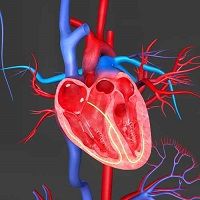How to Assess non-CABG Bleeding Risk
Swedish researchers have developed a way to predict major bleeding in revascularized patients who have acute coronary syndrome.

Swedish researchers have developed a way to predict major bleeding in revascularized patients who have acute coronary syndrome (ACS.)
They have done that using a new biomarker-based model.
In research to be presented April 2 at the American College of Cardiology 65th Scientific Sessions & Expoin Chicago, IL, Daniel Lindhom and colleagues at Uppsala University, Uppsala, Sweden looked at patients in the PLATO trial. In all 9,352 patients with ACS had revascularization. They also provided plasma for biomarker analyses at baseline.
Patients received ticagrelor or clopidogrel , as well as aspirin, for up to one year.
There were 349 cardiac events during follow-up.
The most important variables were age, level of growth differentiation factor-5, gender, and admission hemoglobin level.
Using these biomarkers the team was able to assess the risk of non-CABG-related major bleeding.
“This novel risk score predicts non-CABG-related major bleeding in patients on dual antiplatelet treatment after ACS and might be useful to guide decisions,” the team concluded.